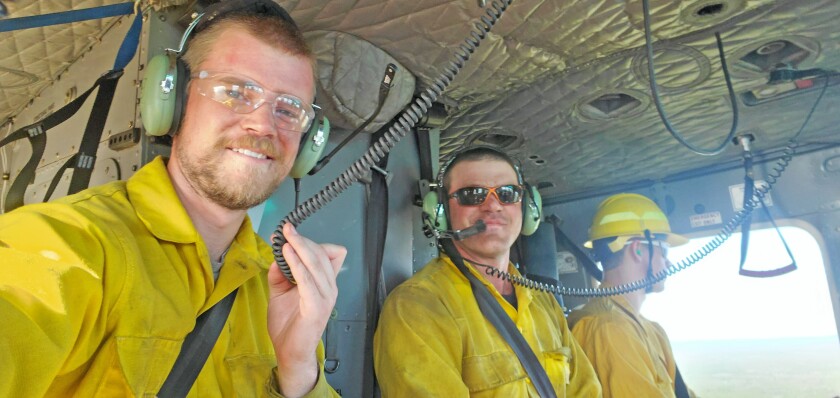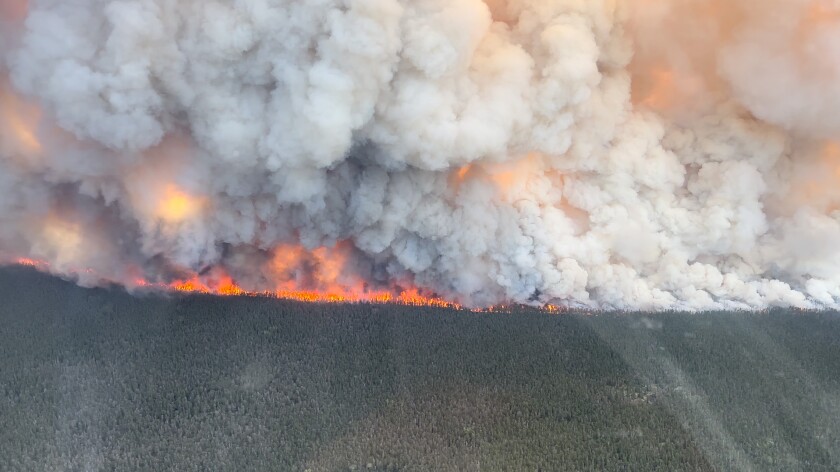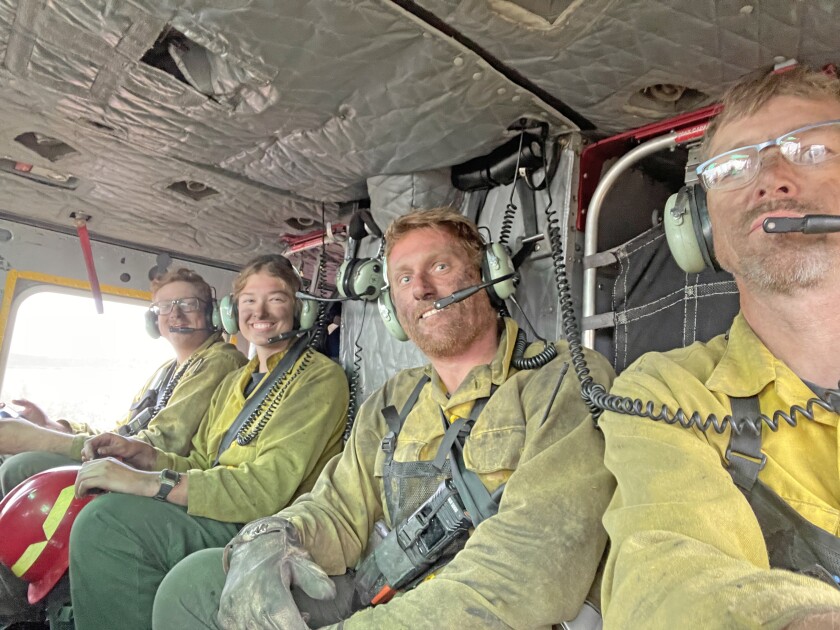As Canadian wildfires continue to grow, outside help is needed to fight them. Two men from the Minnesota Department of Natural Resources (DNR) recently returned from two weeks spent fighting wildfires in Canada.
Jordan Griffing lives in Menahga and works out of the Nimrod DNR office, while Kent Wolf works out of the Detroit Lakes office.
ADVERTISEMENT

The two men were working to protect the little town of Grand Rapids, Manitoba, from a large fire two miles away.
The DNR is part of the Great Lakes Forest Fire Compact, which also includes Wisconsin, Michigan, Ontario and Manitoba. DNR employees who are willing to work on fires in other areas of the compact put their name on a list and wait to be called into service.
Griffing and Wolf served on the same crew, but in different squads. They shared their experiences while on the firefighting mission.

“They told us they were short staffed, and it’s the worst fire season they’ve ever had,” Griffing said. “Normally, they have around 1,200 firefighters and currently they have around 700. Dry lightning storms are the main cause of fires in these remote areas of Canada because they can get pretty big before they are spotted.”
Wolf has been fighting fires for about 25 years.

“The fire we were on is continuing to grow,” he said. “When we left, it was about 50,000 acres. I believe there are more than 27 fires burning in Canada right now.”

ADVERTISEMENT
Facing danger
Griffing was working on a squad that camped in a staging area away from the fire and was flown out by helicopter to fight the fire. They returned to camp at the staging area each night.

His squad had to be evacuated from the fire line twice.
“One time, it was kind of cutting it close,” he said. “We could see the fire blowing up. It was a little hairy because our original plan for evacuating was basically the area where the fire was, so we had to walk about a mile-and-a-half to another helipad so the helicopter could pick us up. They had eyes in the sky keeping tabs on the fire. The fire would jump from the crown of one tree to another and make runs whatever direction the wind was blowing."
“We were on some active fire fronts where we were right next to the fire putting in a hose line. We would cut trees out, then drag the hose down a trail where we had removed the brush.”
Another close call happened when Griffing was on the front line, running the water nozzle using a gas-powered pump to get water to where it was needed.
“We were bumping up trying to wrap around this black area so it wouldn’t push further and a tree started torching out about 20 feet in front of me,” he said.
ADVERTISEMENT
Life on the fire lines
Griffing said Minnesota firefighters carry a blue bag of firefighting gear, including gloves, a gallon of water and a fire shelter.

His squad was ready for fire duty by 7 a.m. each morning.
“They would do scouting in the morning and then fly us out around 10 a.m. or 11 a.m. most days, and we’d be out there until 7:30 p.m. or 8 p.m. at night,” he said.
The area Griffing and his crew worked in was forested and rocky.
“It was mostly pine and rocks with moss in between and very little dirt,” he said. “They would push out dozer lines, but there would still be moss in the cracks of the rocks. The fire would creep through those mossy cracks to the other side of the fire line, so it was hard to keep it contained.”
It was Wolf’s second firefighting mission in Manitoba.
“I've fought fires in Ontario, British Columbia and a bunch of western states,” he said. “Every fire is different. These Canadian fires are in remote areas. They used helicopters to get us where we needed to be. If we needed supplies or water, we’d call a helicopter or airplane and they would dump water on it.”
ADVERTISEMENT

His squad camped near the fire lines.
“They dropped us off with all of our camping gear, food and firefighting gear at a spot near the fire,” he said. “We fought the fire all day, and near the end of the day we set up our camp, cooked our supper and went to bed.”
Their first camp was about 100 yards from the blackened edge of the fire.
“We needed a spot where a helicopter could get in to pump water, so we were right at the edge of a lake,” he said. “We started from that lake and kept pushing that fire edge back to contain it.”
The second camp was set up on a little peninsula.
“It was black on either side of us,” he said. “We were right within part of the area that had burned, but nothing was smoldering within a quarter mile.”
Wolf said when a running crown fire started jumping from treetop to treetop, they had to get everyone out quickly.
ADVERTISEMENT
“There are no resources on the planet earth that could stop what the fire was doing on those days,” he said. “These fires were what is called a fuel-driven fire. There was enough fuel in the canopy and everything was dry enough that one tree ignited the next tree and the next tree in a rolling fire right through the canopy.”
Wolf said they were notified by radio by helicopter personnel when they needed to evacuate. “They were our lookout, keeping an eye on that fire,” he said. “When things started to look bad, they got us out of there.”
He said most of the smoke from the fires went up into the atmosphere, so it wasn’t hard to breathe.
“When the wind currents bring it down here to Minnesota, that’s when you feel the impacts of the smoke,” he said.
Griffing said he learned valuable lessons from this experience.
“I’ve gone on fire assignments before, but haven’t been on the fire line on one of these big fires,” he said. “Before, I was on crews doing structure prep and protection. I wanted to see what being on the fire line is like and how fire operates on a larger scale than the one-acre fires I’m usually responding to. Communication is key, and catching these fires quickly before they get too big and out of hand.”








